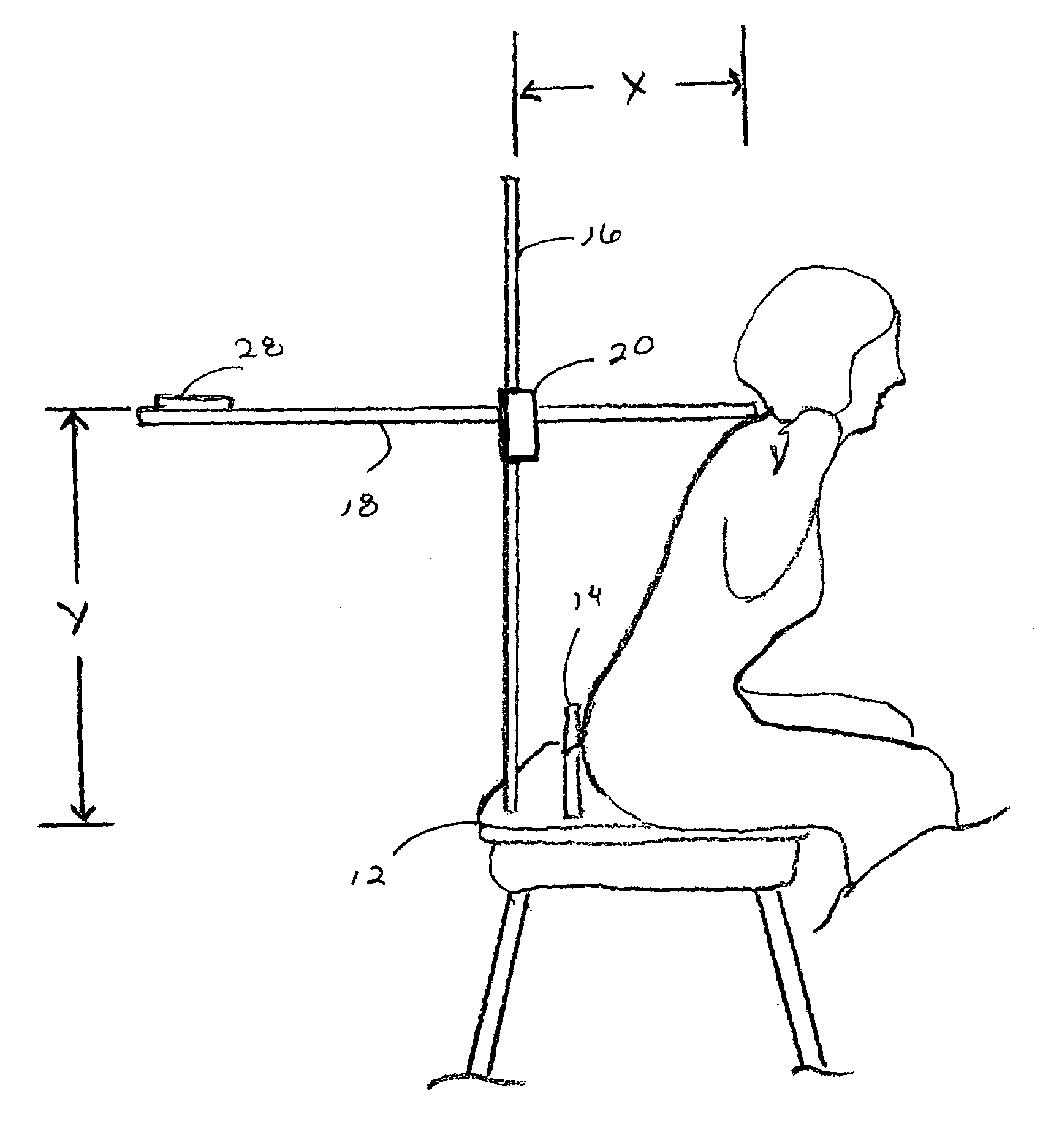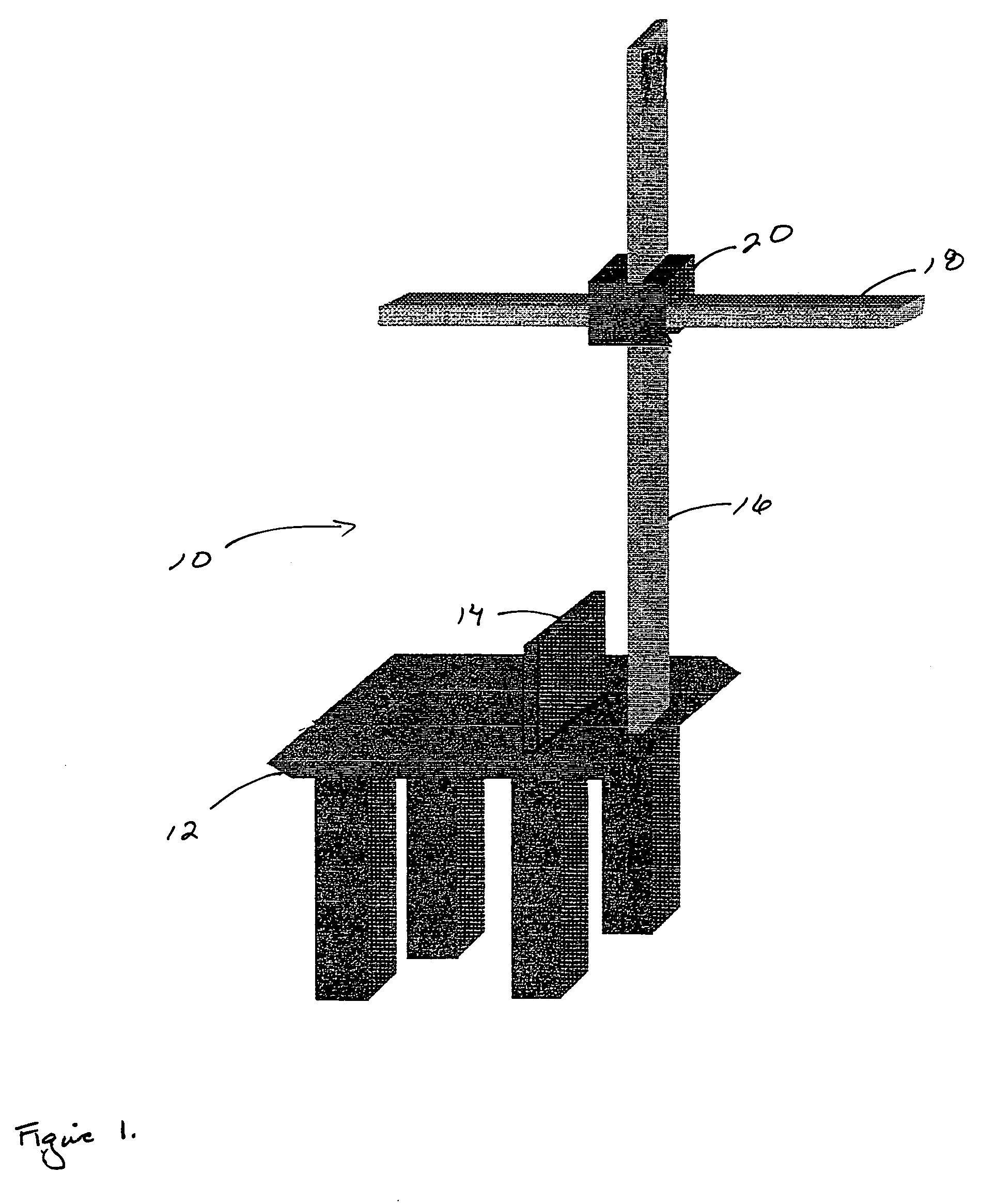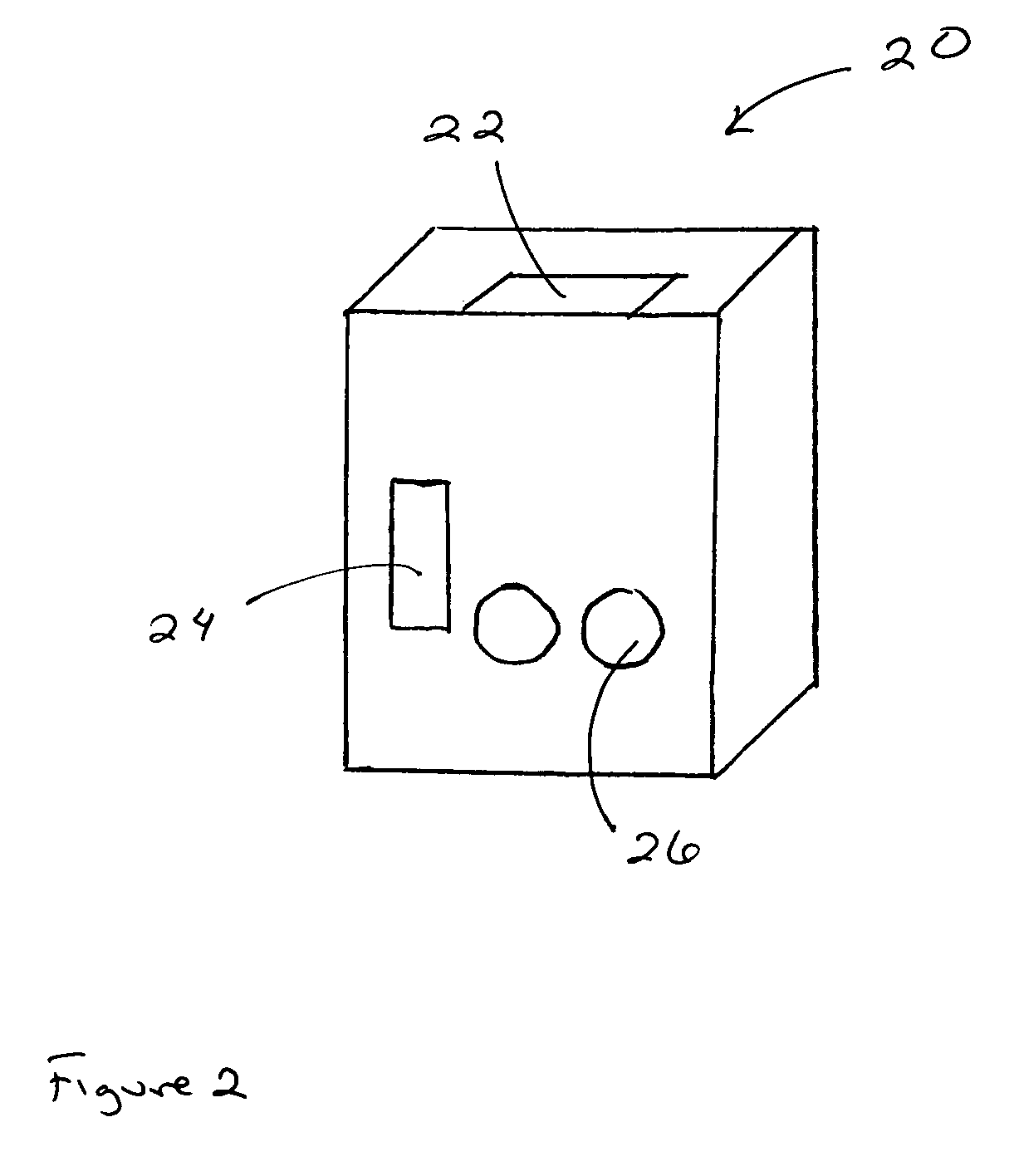Spinal proprioception methods and related systems
a technology of spinal proprioception and spinal canal, applied in the field of spinal canal proprioception methods and related systems, can solve the problems of inconvenient clinical use of devices/procedures, repositioning errors, and inability to actively replicate passive ankles
- Summary
- Abstract
- Description
- Claims
- Application Information
AI Technical Summary
Benefits of technology
Problems solved by technology
Method used
Image
Examples
example 1
[0082]Measurement of Spinal Reposition Sense
[0083]A main objective of this example is to determine whether a device or system of this invention reliably measures reposition sense of the thoracolumbar spine in asymptomatic subjects within the realm of the literature. A secondary objective is to determine whether a difference in reposition sense of the thoracolumbar spine existed between asymptomatic subjects and subjects with back pain. The data of this example shows 1) that repositioning errors in healthy subjects compare with those of other studies of position sense in spinal joints, and 2) that symptomatic subjects will perform less accurately than asymptomatic subjects.
[0084]Subjects were recruited on a volunteer basis from Northwestern University, Department of Physical Therapy and Human Movement Sciences and included both students and faculty. Potential subjects were asked to complete the Oswestry Low Back Pain Questionnaire and a medical history. The subjects were then placed ...
example 2
[0092]Data Analysis
[0093]The data for 45 asymptomatic and 15 symptomatic subjects were analyzed. Calculation of the angle each subject assumed on all trials was computed using the trigonometric equation, theta=tan−1 X / Y. For the purpose of this illustrative example, reposition error was calculated for trials 1–20 as the difference between each trial ⅔ position and the initial ⅔ position performed during the practice trial. Absolute mean reposition error for each subject was calculated as the average of the sum of the reposition errors for trials 4–7. Trials 4–7 were chosen secondary to motor learning, fatigue, and oversampling issues determined from a graphical analysis (FIGS. 5 and 6). To quantitatively determine the unknown population mean, a 95% confidence interval (CI) was calculated from the mean absolute reposition error (ARE) and standard deviation (SD) for 20 trials.
example 3
[0094]SPSS 8.0 was used to calculate a repeated measures two-way analysis of variance (ANOVA) using trials 4–7. Shrout and Fleiss calculations were used to calculate the Intraclass Correlation Coefficients (ICC 2,1) for the two populations to assess intraclass reliability. The independent t-test was used to compare the asymptomatic to symptomatic subjects to determine if there are differences between the two groups. The 45 asymptomatic subjects were randomized into three groups of 15 and compared to the group of 15 symptomatics. A paired t-test was performed for the test-retest group to determine day-to-day reliability of the device.
PUM
 Login to View More
Login to View More Abstract
Description
Claims
Application Information
 Login to View More
Login to View More - R&D
- Intellectual Property
- Life Sciences
- Materials
- Tech Scout
- Unparalleled Data Quality
- Higher Quality Content
- 60% Fewer Hallucinations
Browse by: Latest US Patents, China's latest patents, Technical Efficacy Thesaurus, Application Domain, Technology Topic, Popular Technical Reports.
© 2025 PatSnap. All rights reserved.Legal|Privacy policy|Modern Slavery Act Transparency Statement|Sitemap|About US| Contact US: help@patsnap.com



